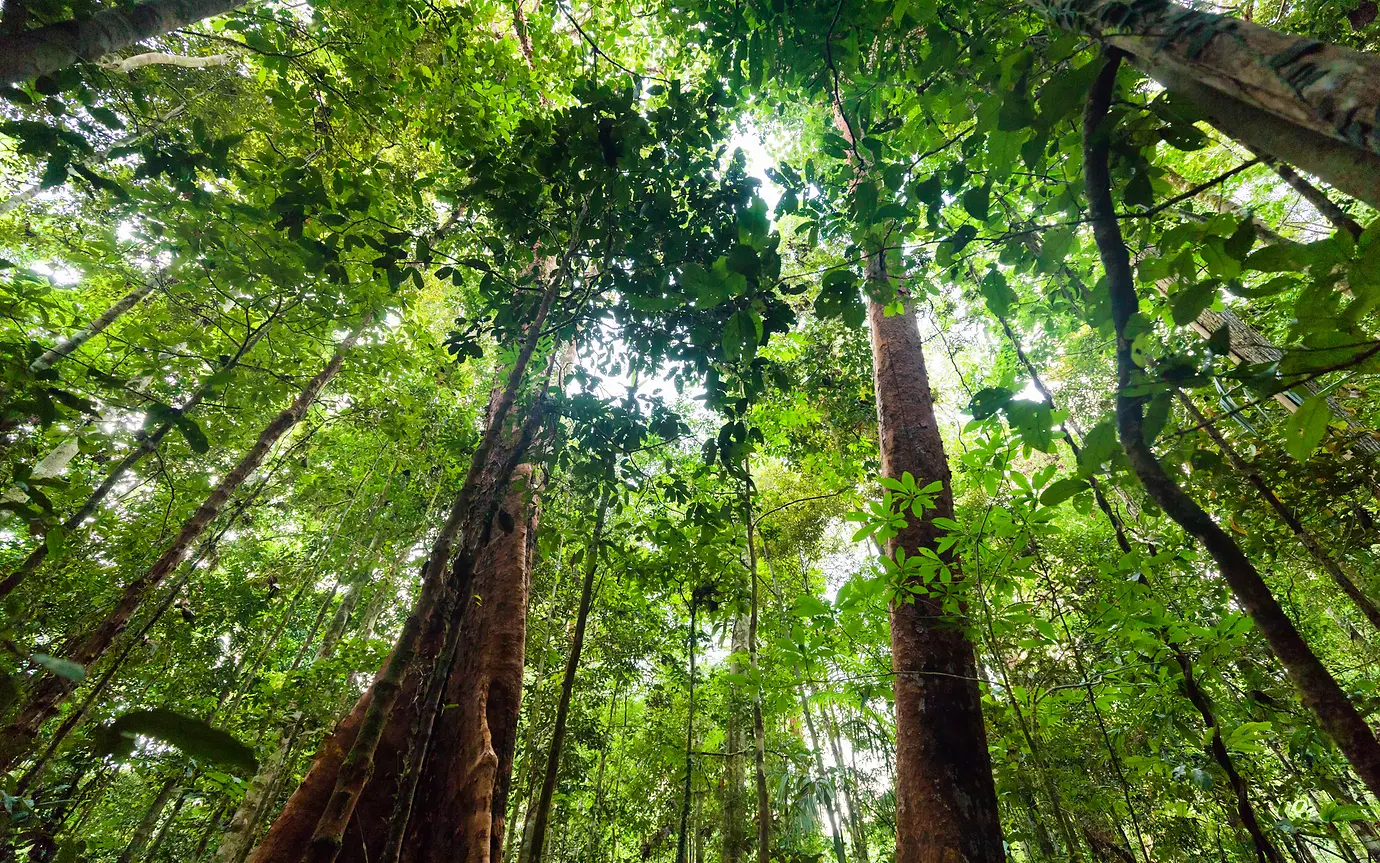LGT’s operations have been climate neutral since 2010. Carbon avoidance projects such as the rainforest conservation project in Katingan, Indonesia help us offset our operational emissions. The project also protects biodiversity and supports local communities.

The Katingan rainforest in Indonesia and its underlying peat soils are massive carbon reservoirs. Covered in swamp belts and waterways, the coastal lowlands are also home to a variety of wildlife including the endangered orangutan. To offset our operational emissions in the coming years, LGT has purchased carbon credits generated by the Katingan Mentaya Project.
Prior to the launch of the conservation project, the area was under threat of being converted to an industrial acacia plantation. Clearing the forest and draining and burning the peat soil would have emitted CO2 and destroyed biodiversity. The Katingan project preserves forestland by creating alternative sources of income and educational opportunities for local communities. This way, more value is derived from forest protection than from deforestation.
Offsets refer to averting future CO2 emissions. These can include protecting rainforests from deforestation or substituting coal with wind power for electricity production. Developers of offsetting projects measure, parcel, and sell the claim to the avoidance of emissions to corporate purchasers such as LGT on the so-called voluntary carbon market. Katingan, the world’s largest forest-based offsetting project, is the continuation of a successful program to offset LGT’s operational emissions, including the emissions from LGT’s buildings, electricity consumption and business travel.
The carbon offsets from the Katingan project help LGT in its efforts to achieve climate neutrality. However, CO2 is still emitted despite the offset. This adds to the global CO2 budget, though less so than if the project were not financed. Carbon offsets can therefore not be used as part of our efforts to reach net-zero by 2030. To achieve net-zero, LGT must reduce its emissions to the greatest extent possible and finance the removal – not the offset – of residual, unavoidable emissions.
Projects such as Katingan can prevent future emissions. Carbon removal projects go a step further, absorbing CO2 from the atmosphere. These solutions include nature-based approaches such as planting trees but also more technological solutions, such as Climeworks’ direct air capture (DAC) technology. This process of carbon dioxide removal, or CDR, refers to permanently eliminating the same amount of CO2 from the atmosphere as the greenhouse gases that are emitted, and storing these long term in a so-called CO2 sink. This leaves the global CO2 budget unchanged: the net effect on the climate is zero.